The Principle of Contrast in Web Design
Posted by Eller J. Mejia on Oct 14,2011
A web design is made of many different elements, each having varying levels of importance and some demanding prominence over others. Some elements share a relationship, while others are not related at all. The tricky part is being able to communicate this visually and effectively. This is where the principle of contrast comes into play.
Contrast is the difference between two or more elements. With contrast, a designer can create visual interest and direct the attention of the user. But imagine if all of the elements on a web page were the same in style and appearance. There would be no organization, no flow, and definitely no hierarchy. Content would be nearly impossible to digest. This makes contrast an essential part of effective web design.
In this article, we’re going to see how contrast can be achieved by creating differences in three aspects of design: color, size, and alignment.
Contrast in Color
When most people hear the word contrast, they think of color. Even though the principle of contrast is not limited to color, it can go a long way in helping the user differentiate page elements from one another.
It’s a given that almost all web designs have a header, a content area, and a footer. These are three completely different areas that should have a clear visual separation. Using contrast in background color is an excellent way to achieve this.
Here you will see that the Church Media Group’s website is an excellent example. The header and footer have dark background colors, while the content area is white. This clearly establishes the content as being different and even more important than the other areas. If we look a little further there is another level of background contrast within the content area. The “Featured Project” area has a light blue background. Since the amount of contrast between this area and the rest of the content is minimal, it tells us that the two are related.
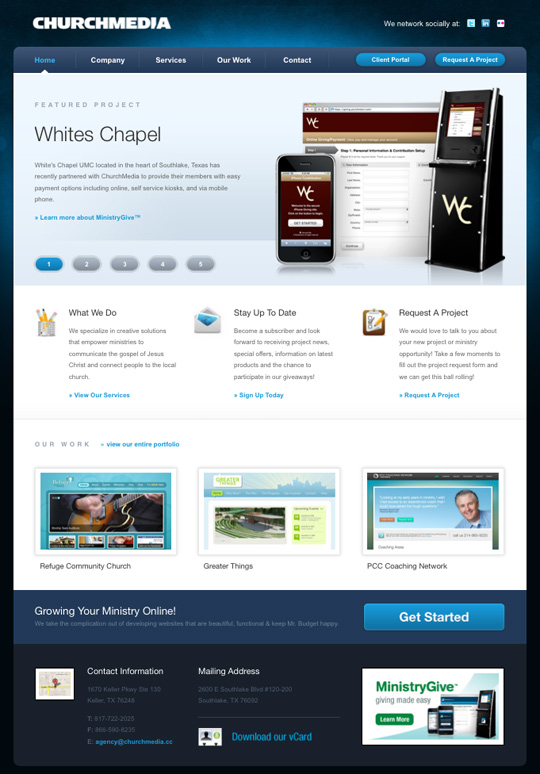
Phil Renaud’s portfolio has a unique layout and an incredible color scheme. He uses a gold-yellow color to create contrast between the vertical navigation and the rest of the predominantly brown design
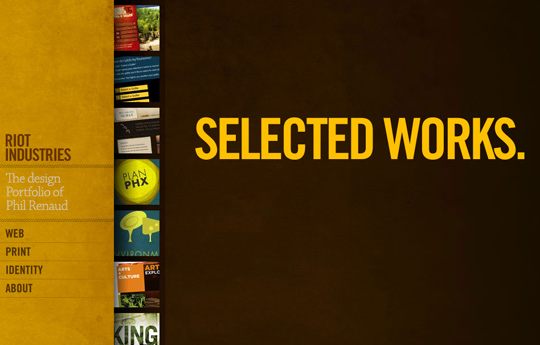
Color can also be used within text to create contrast. Billy Tamplin does an excellent job of creating separation and hierarchy by giving the headings, subheadings, and paragraph text all different colors. For a blog style layout, establishing contrast between post headings and body text is critical. It helps the user easily see where articles begin and end as they scroll down the page.
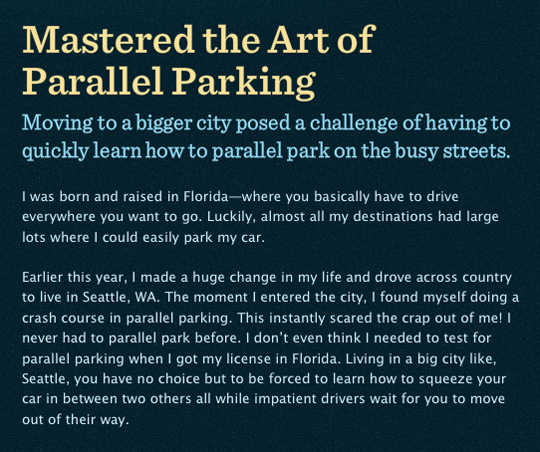
Contrast in Size
Another way to create contrast in web design is to use size differences between elements. In other words, make some things bigger than others.
Creating contrast through size becomes very important when you can’t rely on color. Taxi has a lot going on within it’s layout and has a minimal color scheme. So in order to establish a hierarchy among the three columns, the designer used a much larger width on the middle column – over two times that of the left and right columns. This makes it apparent to the user that the middle column is the most important area of the page.
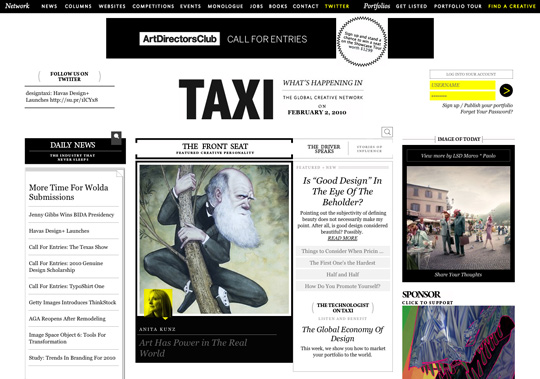
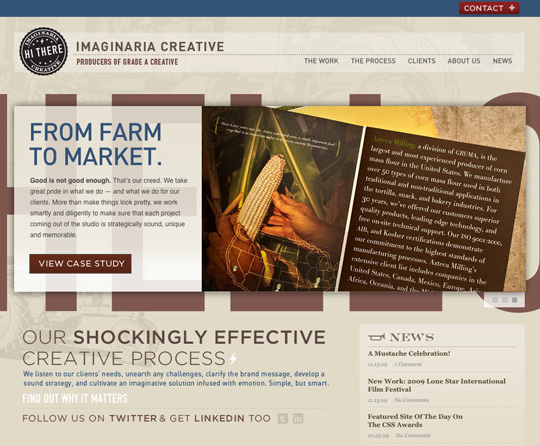
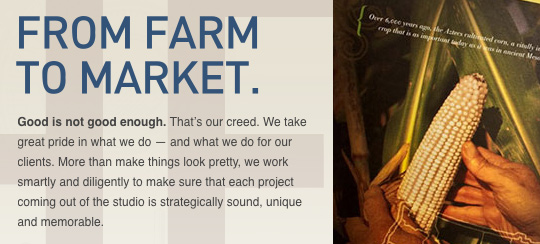

11 Blogs to Help You Become a User Experience Expert

No comments:
Post a Comment